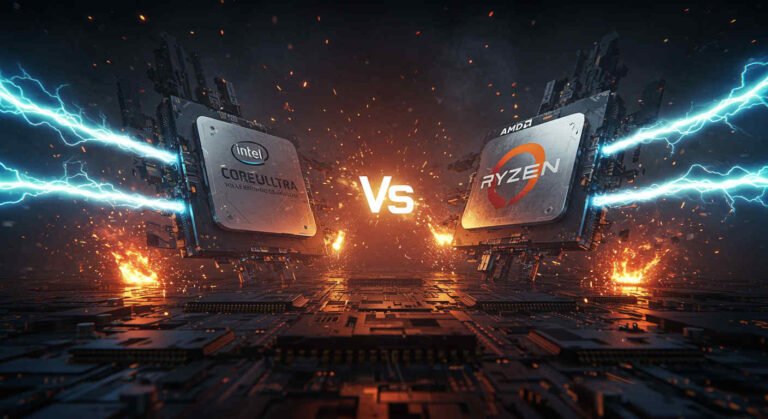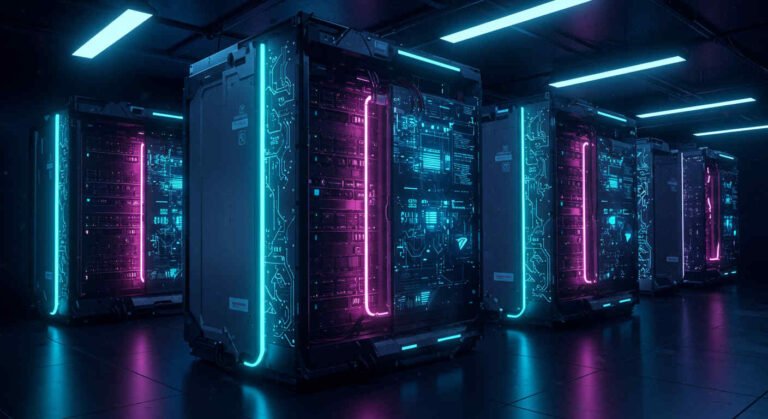Sustainable Hardware: How Green Tech Is Shaping PCs in 2025
Table of Contents
Introduction
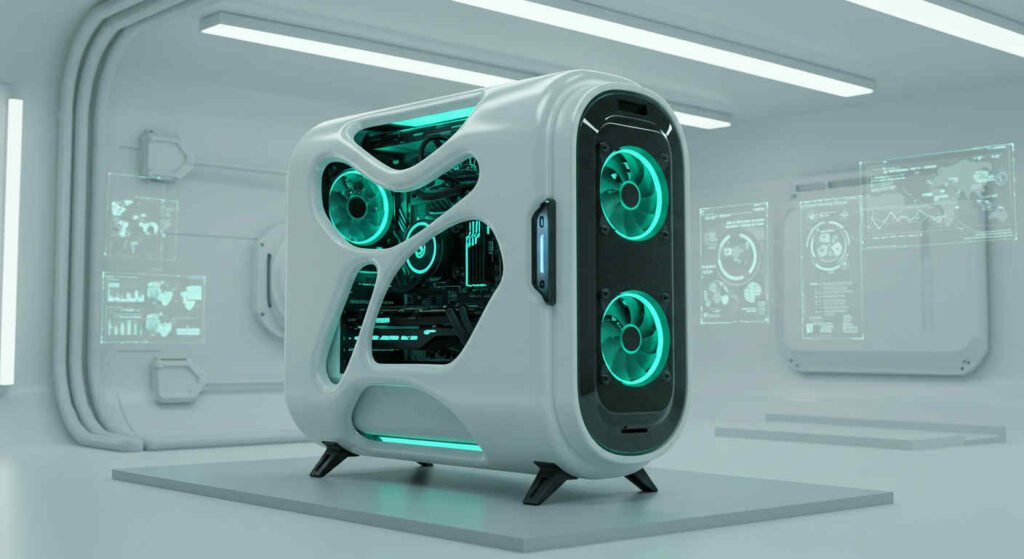
Alright, folks, picture 2025 busting in like a bull in a china shop, and the tech world’s humming louder than a June bug on a porch light. But hold your horses—there’s a new kid on the block, and it’s green tech, turning PCs into the planet’s best sidekicks. These ain’t just machines for gaming or number-crunching; they’re sipping power like a kid with a straw and cutting waste faster than a combine in a cornfield.
Sustainable hardware’s the star of the show, weaving eco-smarts into every chip, wire, and doodad. We’re talkin’ ’bout motherboards made from stuff that won’t clog up a landfill for a million years, and packaging so clever it practically composts itself. Think about it – your next rig could be built with materials that are easier on Mother Earth from the get-go, not just when you plug it in.
It’s a whole new ballgame, where performance ain’t the only player on the field; being kind to the planet is becoming a gold-star feature, a real badge of honor. This ain’t just a trend, folks, it’s a full-blown revolution whisperin’ through the wires. From data centers that don’t hog energy like a pig at a trough to gadgets that fade away like a morning fog, green tech’s the lifeblood of a fresh PC era. So, grab a cold one, plop down, and let’s dig into how sustainable hardware’s shaping PCs in 2025. Hot dog, this is gonna be a humdinger!
Why Green Tech’s Got Everyone Talking

Let’s lay it out plain—tech’s been a bit of a power glutton, chugging electricity like a kid guzzling soda on a scorcher. By 2026, AI could burn enough juice to light up a small country, and data centers are puffing out carbon like a chimney in a snowstorm. But don’t get your knickers in a twist, ‘cause sustainable hardware’s charging in like a cavalry, promising PCs that dazzle without trashing the Earth. In 2025, it’s not just about building rigs that zoom; it’s about crafting ones that keep Mother Nature smiling wider than a kid with a new bike.
This green wave’s more than just high-tech toys—it’s a heartfelt note to the planet, a pinky promise to keep the air clean and the forests lush. The twist? We’re using top-notch tech to clean up the mess tech helped stir, like a cook scrubbing their own pots. From low-power chips to parts that recycle like champs, sustainable hardware’s the thread weaving a future where PCs and the planet are closer than biscuits and gravy. By 2025, it’s clearing a path to a world where your computer’s as kind to the environment as a breeze through a pine grove.
Low-Power Chips: The Energy-Saving Hotshots
Okay, let’s put the spotlight on the big shots of green tech—low-power chips. These little dynamos are the brains of 2025’s PCs, running cooler than a popsicle in a deep freeze and using less juice than a lantern on its last flicker. Heavyweights like AMD, Intel, and spunky startups like Blumind are cooking up chips that hum along without slurping power, making your PC greener than a mint julep.
AMD’s Ryzen 7040 series is like a sprinter who doesn’t break a sweat, sipping just 15-30 watts while blasting through gaming and video editing like a hot knife through butter. Intel’s Lunar Lake CPUs ain’t no slouches either, slashing power use by 40% compared to older chips, perfect for laptops that keep chugging longer than a country ballad. But the real wildcard’s Blumind, a startup crafting analog neural chips that run AI tasks on so little power it’s like a lightning bug glowing in a mason jar. These chips aren’t just clever; they’re whispering dreams of a future where PCs work hard without leaving a carbon footprint bigger than a monster truck’s.
The snag? High-performance chips still crave power like a toddler wants candy, and scaling analog tech’s tougher than wrangling a greased pig. But these energy-sippers are a lighthouse in the dark, proving power and planet can be buddies. In 2025, they’re the fire sparking eco-friendly PCs, showing you can have your pie and eat it too—without setting the Earth on fire.
Recyclable and Biodegradable Parts: Keeping It in the Loop
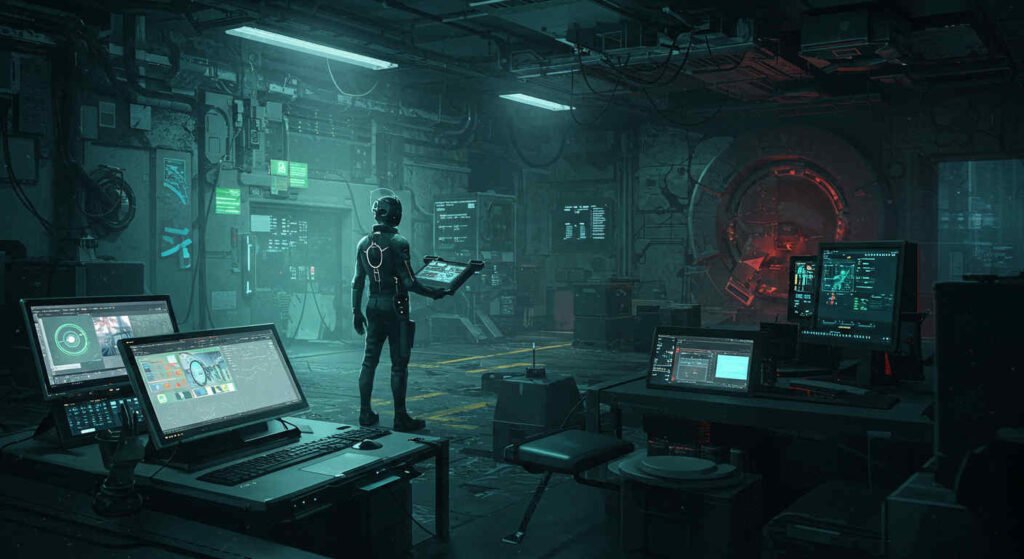
Now, let’s switch tracks to the guts of your PC—cases, boards, and bits that don’t just stack up in a landfill like old tires. In 2025, sustainable hardware’s all about keeping things in the great circle of life, making parts that recycle or biodegrade quicker than you can say “well, I’ll be!” It’s like giving your PC a second swing at the plate, turning old gear into new gems.
Framework’s out front with modular laptops you can swap parts on like a kid trading marbles, slicing waste faster than a chef chopping peppers. Their motherboards and cases use recycled aluminum and plastics, saving the Earth from mining scars uglier than a mud fence. Startups like Precious Plastic are pushing boundaries, messing with biodegradable PC parts—think circuit boards that dissolve like sugar in tea instead of hanging around like a bad cold. Even big guns like Dell are in the game, aiming for 100% recyclable or renewable packaging by 2030, with 2025 as a key checkpoint.
This recyclability push is a window into our toss-it culture, nudging us to rethink how we make and ditch tech. The hitch? Biodegradable parts aren’t everywhere yet, and recycling tech’s like untangling a mess of yarn after a kitten’s had at it—slow and spendy. But the vision’s sweeter than molasses: a world where PCs don’t clog junkyards but sink back into the Earth like a leaf in autumn. In 2025, these parts are the roots of a greener tech tree, growing stronger every day.
Cooling That Keeps It Cool—Without the Guilt
Whoa, let’s talk cooling, ‘cause PCs can get hotter than a skillet on a campfire. Old-school cooling—spinning fans and liquid loops—can suck power like a vacuum cleaner gone wild. In 2025, green tech’s flipping the script with cooling tricks that keep your rig frosty without heating the planet like a microwave pizza.
Passive cooling’s the new darling, using hefty heat sinks and smart designs to whisk heat away without a fan’s whir. Noctua’s fanless coolers are working like magic, quiet as a whisper and using zero watts. For data centers, immersion cooling’s making waves—servers dunked in special liquid that pulls heat away faster than a dog shakes off a bath. Google’s all in, cutting cooling energy by up to 70%. Even home PCs are getting slick with phase-change materials that soak up heat like a sponge, keeping temps low without a power-hungry pump.
These cooling hacks are a tip of the hat to smarts, showing we can keep tech chilly without frying the environment. The downside? High-end rigs still need active cooling to hit top gear, and immersion tech’s pricier than a barrel of shrimp. Still, these solutions are a breath of fresh air, pointing to a future where PCs run as cool as a mountain brook. In 2025, they’re the wind keeping sustainable hardware sailing smooth as glass.
Green Manufacturing: Starting Off Green
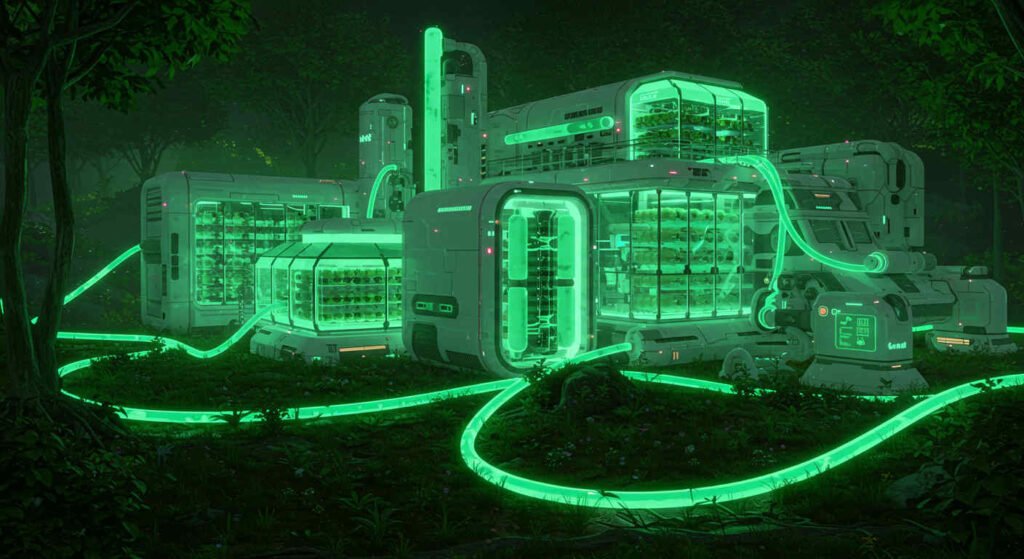
Let’s zoom out to how PCs are born. Manufacturing’s been a bit of a coal-chugging beast, spitting out emissions like a grumpy smokestack. But in 2025, green tech’s cleaning house, making production as eco-friendly as a basket of homegrown tomatoes.
Chipmakers like TSMC are powering factories with solar and wind, trimming carbon like a barber snipping a mullet. By 2025, TSMC’s shooting for 60% renewable energy, a huge jump from the fossil fuel days. ASUS is pitching in, using recycled materials in motherboards and cases to cut down on mining that scars the Earth like a bad burn. Startups like Fairphone are all about ethical sourcing, making sure minerals like cobalt and lithium come from fair-trade mines, not shady outfits that’d give you the creeps.
This green manufacturing’s a pledge to the planet, promising tech that doesn’t cost the Earth its dinner. The catch? Clean production’s more expensive than a steak supper, and supply chains are messier than a kid’s finger-painting. But the payoff’s massive—a world where PCs are born green, not just patched up later. In 2025, these efforts are the seeds of a tech world that grows without choking the planet.
Software’s Green Magic: The Silent Star
Hold up, don’t think it’s all about hardware—software’s got a big role in making PCs green. In 2025, smart code’s like a wizard casting spells, squeezing every drop of efficiency from your rig. It’s the quiet champ making sustainable hardware glow brighter than a firefly in July.
Windows 11 and Linux distros are getting leaner, sipping power like a dainty teacup. Windows’ Eco Mode tweaks CPU usage to save juice, while Linux’s power profiles let you ease off when you don’t need a full-throttle roar. AI’s helping out too, with NVIDIA’s Max-Q optimizing GPU power for laptops, making them last longer than a camel in the desert. Even browsers like Chrome are pitching in with energy-saving tabs that cut power when you’re just surfing the web.
This software savvy’s a whisper of progress, proving brains can outshine brawn. The rub? Optimizing code’s like threading a needle in a gale—tricky and slow. But it’s a game-changer, promising PCs that run leaner than a greyhound. In 2025, software’s the breeze lifting sustainable hardware to the stars.
The E-Waste Beast: Facing the Monster

Let’s not sugarcoat it—e-waste’s the big, ugly critter in tech’s backyard. In 2025, the world’s churning out 61 million tons of electronic junk a year, piling up faster than leaves in a storm. Sustainable hardware’s staring this beast down, but it’s a fight tougher than a barnyard brawl.
Modular designs, like Framework’s laptops, let you swap parts without tossing the whole rig, cutting waste like a ninja slicing bamboo. Recycling programs are stepping up—Apple’s Daisy robot can strip 200 iPhones an hour for parts, and Dell’s recycling 1.6 million pounds of electronics yearly. Startups are even turning e-waste into art, crafting cases from old circuit boards like a phoenix rising from the ashes.
But here’s the kicker: recycling’s pricey, and not all parts can be reused—some end up in landfills like ghosts that won’t fade. The irony’s sharp: we’re building green tech while drowning in tech trash. Still, these efforts are a candle in the dark, pointing to a future where e-waste’s tamed like a wild mustang. In 2025, sustainable hardware’s the lasso wrangling this beast, inching us toward a cleaner planet.
Green Data Centers: The Cloud’s Eco Overhaul

Let’s take a step back to the cloud, ‘cause data centers are the backbone of modern PCs, powering everything from Netflix marathons to AI smarts. These giants used to chug power like a frat boy at a kegger, but in 2025, green tech’s giving them a serious eco-overhaul.
Google and Microsoft are leading the pack, running data centers on wind, solar, and geothermal energy. Google’s aiming for carbon-free energy by 2030, with 2025 hitting 90% renewable. Cooling’s getting greener too, with liquid cooling and AI-driven airflow slashing energy use by up to 30%. NVIDIA’s Grace CPUs are built for data centers, sipping power while crunching data like a champ.
These green data centers are a pact with the planet, promising cloud computing that doesn’t cloud the skies with carbon. The challenge? Scaling renewables is like climbing a greased pole—costly and messy. But the payoff’s massive—a world where your cloud PC’s as green as a meadow. In 2025, these centers are the roots keeping sustainable tech grounded, letting the digital world bloom like a spring field.
Consumer Power: You’re the Green Trailblazer
Hey, don’t think this is all on the tech honchos—you’re a key player in this green revolution. In 2025, consumers are pushing for sustainable PCs like a tidal wave, voting with their wallets for brands that care about the Earth. It’s like a potluck where everyone’s bringing something to the table.
Buying refurbished PCs from outfits like Back Market saves cash and cuts waste, giving old rigs a new spark of life. Backing brands like Framework or ASUS, with their eco-friendly designs, sends a message louder than a foghorn. Even tiny choices—like powering down your PC at night or using eco-mode software—stack up like coins in a piggy bank. The snag? Green tech can hit your wallet harder upfront, and some brands’ eco-claims are shadier than a used car lot.
Your choices are the ripples in a pond, spreading change across the tech world. In 2025, consumers are the gust pushing sustainable hardware forward, proving small moves can spark big waves. You’re not just building a PC; you’re building a greener tomorrow.
The Hurdles: Green’s Got Its Bumps
Let’s not kid ourselves—going green’s no cakewalk. Sustainable hardware’s got obstacles tougher than a mule’s hide. Clean manufacturing and recycling cost a pretty penny, and scaling biodegradable parts is like teaching a cow to tap dance—slow and clumsy. Chip shortages, though better, still bite like a mosquito in July, and high-performance green chips aren’t cheap as dirt yet. Plus, e-waste’s a beast that won’t go quietly, and some companies are just greenwashing, slicker than a snake oil salesman.
These hurdles are the storm clouds on the horizon, hinting that the path to a green tech utopia’s got some ruts. But they’re also the sand that makes the pearl, pushing innovators to think sharper than a tack. The future’s bright, with 2030 as a big target for carbon-neutral tech. In 2025, these challenges are the forge shaping sustainable hardware into something tougher than a two-dollar steak.
The Green Dream: A Bright, Earth-Friendly Future
So, why’s sustainable hardware shaping PCs in 2025? It’s the pulse of a tech world that’s faster, smarter, and kinder to the Earth. Low-power chips are sipping energy like fine wine, recyclable parts are closing the waste loop, and green cooling’s keeping rigs frosty without roasting the planet. From ethical manufacturing to lean software, green data centers to consumer clout, every piece’s a thread in a quilt that’s greener than a jade jewel.
This isn’t just tech—it’s a vow for a world where PCs don’t cost the Earth its breath. The irony’s rich: we’re using tech to heal the scars tech helped carve, like a doctor patching their own patient. Challenges like e-waste and costs are circling like hawks, but the dream’s bigger than a Texas sky. Your sustainable PC’s a blank page, sketching a future where tech and nature sway like partners at a square dance.
See this another good article in our internal links: https://techforgewave.com/ultimate-tech-trends-whats-hot-in-tech-for-2025/
See this good external article: https://www.cnet.com/tech/sustainable-tech-trends-to-watch-in-2025/





